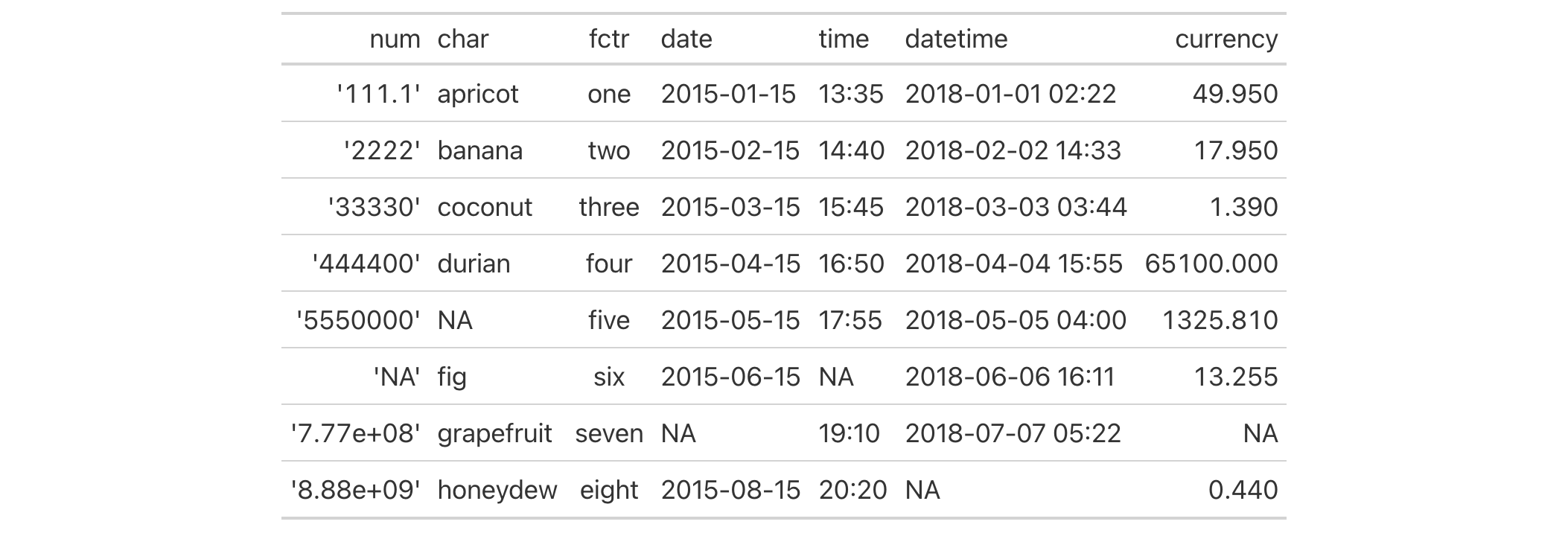fmt: Set a column format with a formatter function
Description
The fmt() function provides a way to execute custom formatting
functionality with raw data values in a way that can consider all output
contexts.
Along with the columns and rows arguments that provide some precision in
targeting data cells, the fns argument allows you to define one or more
functions for manipulating the raw data.
If providing a single function to fns, the recommended format is in the
form: fns = function(x) .... This single function will format the targeted
data cells the same way regardless of the output format (e.g., HTML, LaTeX,
RTF).
If you require formatting of x that depends on the output format, a list of
functions can be provided for the html, latex, rtf, and default
contexts. This can be in the form of fns = list(html = function(x) ..., latex = function(x) ..., default = function(x) ...). In this
multiple-function case, we recommended including the default function as a
fallback if all contexts aren't provided.
Usage
fmt(data, columns = everything(), rows = everything(), fns)Value
An object of class gt_tbl.
Arguments
- data
A table object that is created using the
gt()function.- columns
The columns to format. Can either be a series of column names provided in
c(), a vector of column indices, or a helper function focused on selections. The select helper functions are:starts_with(),ends_with(),contains(),matches(),one_of(),num_range(), andeverything().- rows
Optional rows to format. Providing
everything()(the default) results in all rows incolumnsbeing formatted. Alternatively, we can supply a vector of row captions withinc(), a vector of row indices, or a helper function focused on selections. The select helper functions are:starts_with(),ends_with(),contains(),matches(),one_of(),num_range(), andeverything(). We can also use expressions to filter down to the rows we need (e.g.,[colname_1] > 100 & [colname_2] < 50).- fns
Either a single formatting function or a named list of functions.
Targeting the values to be formatted
Targeting of values is done through columns and additionally by rows (if
nothing is provided for rows then entire columns are selected). Conditional
formatting is possible by providing a conditional expression to the rows
argument. See the Arguments section for more information on this.
Examples
Use exibble to create a gt table. Format the numeric values in the
num column with a function supplied to the fns argument.
exibble %>%
dplyr::select(-row, -group) %>%
gt() %>%
fmt(
columns = num,
fns = function(x) {
paste0("'", x * 1000, "'")
}
)

Function ID
3-17
See Also
Other data formatting functions:
data_color(),
fmt_bytes(),
fmt_currency(),
fmt_datetime(),
fmt_date(),
fmt_duration(),
fmt_engineering(),
fmt_fraction(),
fmt_integer(),
fmt_markdown(),
fmt_number(),
fmt_partsper(),
fmt_passthrough(),
fmt_percent(),
fmt_roman(),
fmt_scientific(),
fmt_time(),
sub_large_vals(),
sub_missing(),
sub_small_vals(),
sub_values(),
sub_zero(),
text_transform()